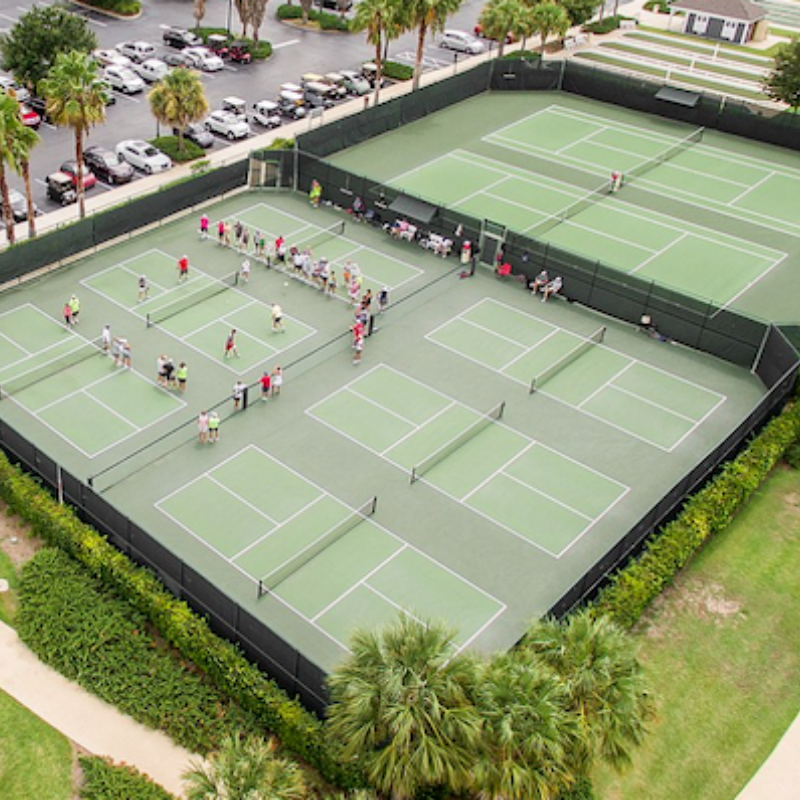Pickleball is growing fast, but beginners often struggle with the rules and gameplay. Without guidance, it can be overwhelming and frustrating.
Pickleball is a paddle sport combining elements of tennis, badminton, and ping pong. Played on a small court, it uses a perforated plastic ball1 and follows unique rules for serving and scoring.
Mastering the basics will make your learning curve smoother and enhance your enjoyment of the game.
What are 8 basic rules of pickleball that are used for beginners?
Starting a new sport can be confusing, especially when the rules seem unfamiliar. Understanding the essential pickleball rules will help you play confidently.
The 8 basic rules of pickleball for beginners include underhand serves, the two-bounce rule2, non-volley zone restrictions3, and proper scoring. These ensure fair play and keep the game structured.
Understanding the Key Rules
Here are the fundamental rules explained in simple terms:
| Rule | Explanation |
|---|---|
| Underhand Serve | The ball must be served underhand, with the paddle below the waist. |
| Diagonal Serve | The serve must land diagonally in the opponent's service court. |
| Two-Bounce Rule | Each team must let the ball bounce once before volleying. |
| Non-Volley Zone (Kitchen) | Players cannot volley (hit the ball in the air) while standing in the kitchen. |
| Faults | Faults occur when a serve is out, hits the net, or a player steps into the kitchen on a volley. |
| Scoring | Only the serving team can score points, and games are typically played to 11, winning by 2. |
| Double Bounce Rule | The ball must bounce once on each side before volleys are allowed. |
| Line Calls | Balls that land on the line are considered in. |
Understanding these basics will allow you to play efficiently and avoid common mistakes.
What are the 4 P's of pickleball?
Beginners often struggle with technique and strategy. The 4 P’s of pickleball4 provide an easy framework to improve gameplay.
The 4 P’s of pickleball—Placement, Patience, Positioning, and Power—help players refine their skills and play smarter, not harder.
Breaking Down the 4 P’s
| P | Definition | Application |
|---|---|---|
| Placement | Hitting the ball accurately to control rallies. | Aim for deep serves and strategic dinks5. |
| Patience | Waiting for the right opportunity to attack. | Avoid unnecessary smashes; play controlled shots. |
| Positioning | Being in the right spot for the next shot. | Stay near the kitchen for better volley control. |
| Power | Using strength wisely for aggressive plays. | Reserve power for smashes and passing shots. |
Balancing these four aspects can dramatically improve your pickleball skills.
What is the golden rule pickleball for beginners?
Beginners often make the mistake of rushing shots or being overly aggressive. The golden rule simplifies decision-making on the court.
The golden rule of pickleball is “Respect the Kitchen.” Avoid volleying in the non-volley zone and play controlled shots near the net.
Why the Kitchen Matters
The kitchen, or non-volley zone, is a critical area that affects strategy:
- Avoid stepping into the kitchen during a volley.
- Use dinks (soft shots) to control rallies.
- Position yourself near the kitchen but not inside.
- Force opponents into errors by keeping shots low.
By following this golden rule, you’ll maintain control and set up winning points.
How do you explain pickleball to beginners?
New players often get confused about pickleball's unique blend of rules. A clear, simple explanation makes learning easier.
Pickleball is a paddle sport played on a small court with a plastic ball. It combines elements of tennis, badminton, and ping pong, featuring underhand serves and non-volley rules.
Key Differences from Other Sports
| Feature | Pickleball | Tennis | Badminton |
|---|---|---|---|
| Court Size | 20x44 feet | Larger | Similar |
| Paddle Type | Solid | Strung racket | Strung racket |
| Ball Type | Plastic with holes | Felt-covered | Shuttlecock |
| Serving Style | Underhand only | Overhand allowed | Overhead allowed |
| Scoring | Only serving team scores | Both players can score | Rally scoring |
By keeping explanations simple, you can introduce new players to pickleball with ease.
Conclusion
Pickleball is easy to learn but has unique rules that require practice. Understanding the basics, mastering the 4 P’s, respecting the kitchen, and knowing how it differs from other sports will help you play confidently.
-
Learn how a perforated ball’s design optimizes flight and bounce in pickleball matches. ↩
-
See official guidelines on the two-bounce rule to maintain fair play. ↩
-
Discover why non-volley zone rules are crucial to avoid faults and maintain strategic gameplay. ↩
-
Explore how the 4 P’s framework enhances skill development and on-court performance. ↩
-
Master the art of dinks to control rallies and outsmart opponents. ↩









